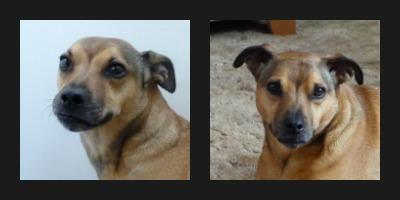Recognizing Signs of Fear, Anxiety and Stress in Dogs
- posted: Sep. 02, 2017
 How Do I Know When my Dog is Stressed?
How Do I Know When my Dog is Stressed?
There are many times throughout the day when your dog may feel uncomfortable with the activities occurring around him or even with his surroundings. Our pets give us many warnings that they are showing signs of anxiety, stress or even fear. If we do not listen to these often subtle signs, we cannot help them cope with these events to produce better reactions in the future.
The vast majority of dogs will exhibit small signs which sometimes appear as normal dog behavior. These include but are not limited to: panting, whining, hiding, yawning, barking and avoiding eye contact. Over time, they may start incorporating more and more signs of avoidance depending upon the perceived “threat”. Other signs include: clinging to their owner, height seeking (climbing things to get to the highest point), refusing treats, being unable to settle down, moving in slow-motion, screaming, nipping, and inability to perform basic commands such as “sit”. Many of you may have seen at least one, if not more than one of these behaviors at the vet, dog-park, out on a walk, with strangers, or when trying to do nail trims at home.
There is a certain part of the brain called the amygdala whose primary role is processing memories, decision-making, and emotional reactions. The more exposure a pet has with these fearful events, the quicker they are to respond to them in a fearful manner in the future. We refer to this as the fight or flight response. If a pet is truly fearful of a situation and feels threatened, he will try to escape or potentially fight back if needed. If we can recognize these fearful signs and try to lessen or eliminate them completely, future events will go much more smoothly.
After recognizing and being aware of your pet’s anxiety, you can try to counter-condition him to be less worried about stress-inducing events. This is achieved by breaking down the event into much smaller pieces and making the pet comfortable with every step, creating a positive experience before moving to the next one. An example of this would be nail trimming. Steps could include: touching the pet’s feet, having the pet stay still while feet are touched, introduction of the nail trimmer itself, actual trimming of one nail or paw, two paws, three paws, and finally all four paws at once. This could take a lot of time and energy so, do not get frustrated. Every small step is a huge achievement and should be celebrated with positive praise and high value treats!
--by Krista Harbold, CVT
This blog brought to you by the Patton Veterinary Hospital serving Red Lion, York and the surrounding areas.
Location
Patton Veterinary Hospital
425 E Broadway
Red Lion, PA 17356
